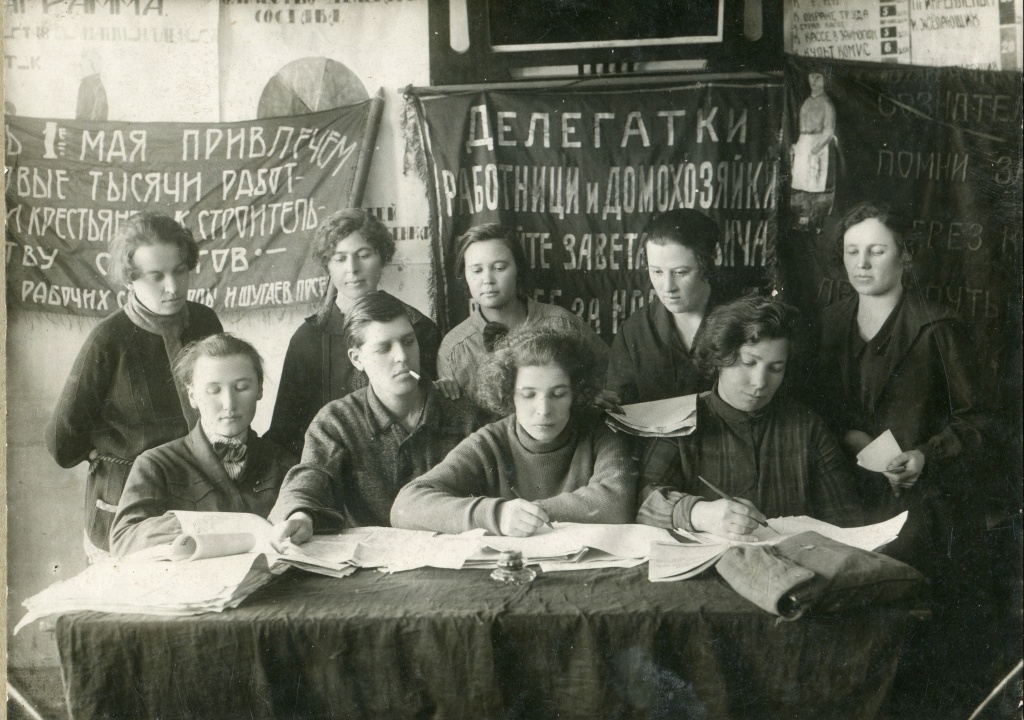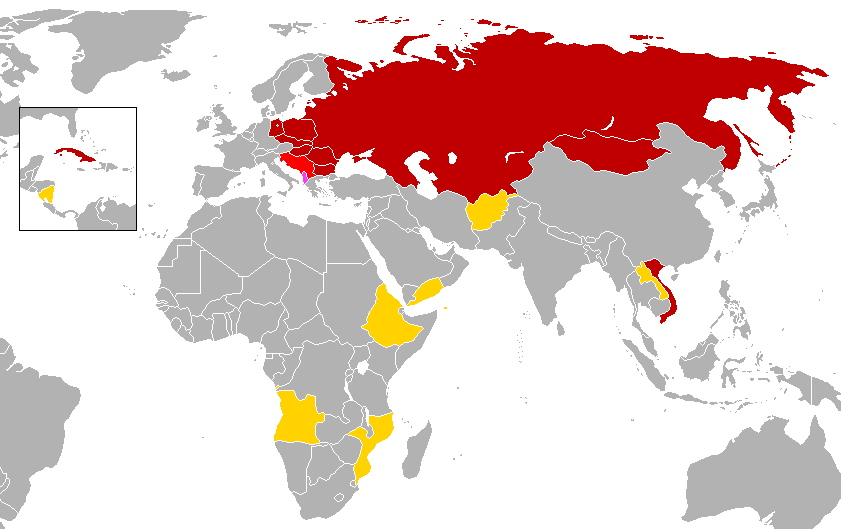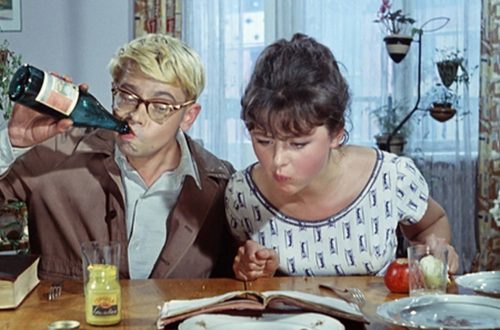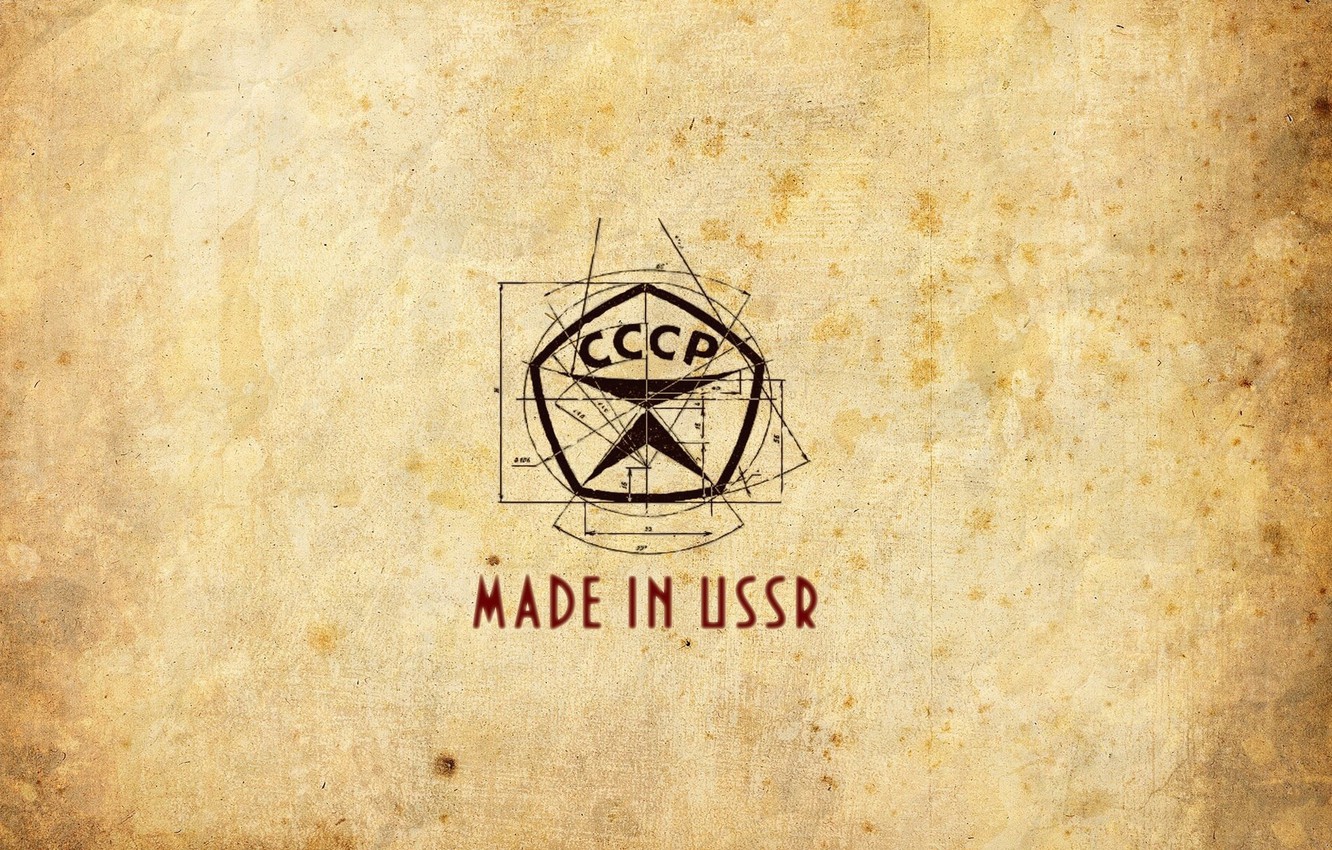
International Interdisciplinary Conference «Gender and Materiality in Central and Eastern Europe in the 20th Century» (Paris, 30 September -1 October 2021)
«The political struggle is also a cultural struggle, a struggle for the reappropriation and transformation of symbols of the dominant» wrote Christine Bard in her work Une histoire politique du pantalon revisiting the methodology of history of fashion and highlighting the symbolic function of clothes (Bard 2010). Since the 1980s, the material culture studies have developed into a solid forum of interdisciplinary research in which anthropologists, archeologists, geographers, sociologists, literary scholars, and more recently historians, play a central role. Scholars have theorized the role of things in power relations (Bourdieu 1979), agency of material things (Gell 1998), and the ability of objects to construct, maintain, reinforce and transform social identities (Miller and Tilley 1996). Objects are important notably because we do not «see» them, the less we notice them, the more important they are in the way they determine our expectations by setting the scene and defining and ensuring normative behavior (Miller 2005 5). Thus, objects that constitute the material culture have the capacity to determine our behavior and identity by remaining at the same time peripheral to our vision.
According to the historian Joan Scott, gender can be defined as «a constitutive element of social relationships based on perceived differences between the sexes» and as «a primary way of signifying relationships of power» (Scott 1986: 1067). Judith Butler in her work Gender Trouble: Feminism and the Subversion of Identity (1990) was first to define gender as a dynamic cultural performance and analyze the «performative» construction of gender. In this respect, one can analyze not only the way the material culture serves to construct gendered identities and to maintain, reinforce or dismantle gendered norms, but also the way it conveys and even embodies power relations in a given society. The present conference aims to provide a platform for discussion of various ways material objects served to regulate and determine gendered behaviors and identities and reconfigure individuals’ understanding of the social world in the context of Central and Eastern Europe in the 20th century. We are also interested in the ways the material world transformed the bodies of men and women and conditioned their individual experiences.
The chronological framework of this conference encompasses the period from the First World War and Russian Revolution to the dissolution of the Eastern Bloc. Russian Revolution of 1917 can be seen as one of the major turning points in the history of gender relations in Central and Eastern Europe. The Revolution was followed by the introduction of «an unprecedented package of rights in addition to the right to vote» (Krylova 2017: 426). However, this short period of women’s emancipation was followed by partial withdrawal of emancipatory policies from the late 1920s on: the women’s question was announced resolved, the Zhenotdel apparatus was dissolved in 1930, and abortion was criminilized in 1936. Given the central role of the party and state in gender politics in the USSR, the following periodization of Soviet gender relations can be employed: emancipatory reforms and political mobilization of women from 1917 to 1930; stabilization of the etacratic contract «working mother» from 1930s to 1955 marked by decriminalization of abortion; crisis of the etacratic gender order from 1955 until mid-1980s; and a shift in the role of the state in regulation of private relations since 1986 (Zdravomyslova and Temkina 2003).
Women were also included in the process of state-building and democratic reorganization in new Central and Eastern European states established after the fall of continental European empires. For instance, women rights were expanded in interwar Hungary, Poland, and the Baltic states. However, in Central and Eastern Europe dramatic changes in the emancipation of women occurred only after the end of World War II. The states of the emerging Eastern Bloc by and large accepted the full package of emancipatory policies already in force in the Soviet Union (Simić, 2018). Moreover, the war itself had a transformative effect on social relations, including the gender ones. Wether renforcing or transcending gender norms, women’s and men’s experiences as soldiers, partisans or (victimized) civilians in Nazi-occupied Central and Eastern Europe problematize our understanding of feminities and masculinities in the context of war and mass violence (Röger, Maren and Leiserowitz 2012; Wingflied and Bucur 2006).
Today gender history in Eastern Europe is no longer «an archipelago of individual efforts, often disconnected and emergent, erupting periodically like so many volcanic islands», as Maria Bucur defined the emerging field more than ten years ago (Bucur 2008). Although research on gender in Central and Eastern Europe has received much scholarly attention in recent years (Einhorn and Sever 2003, Wingfield and Bucur 2006, Ghodsee 2012 and 2018, Funk and Magda 2018), scholarship that combines the theoretical frameworks of gender studies and material culture is still scarce. The scholarship on consumerism in Eastern bloc countries has explored gendered patterns of customary activities and symbolism of material things, including fashion (Bartlett 2010, Zalewska 2017). Besides this, the relatioship between war and gendered corporeality in Eastern Europe’s violent 20th century have been discussed substantially in recent years, especially by Holocaust historians working on sexual and sexualized violence against Jewish women (Ephgrave 2016, Mühlhäuser 2017) and other gendered bodily experiences in the context of genocidal violence (Von Kellenbach 1999). Finally, gender was central to the (re)construction of collective national identities in a series of so-called Yugoslav wars, and led a number of scholars to explore precisely the gendered bodily experiences of these wars (Hayden 2000, Helms 2012, Helms 2013, Žarkov 2007).
In this context the following questions could be raised, but not limited to:
Section 1: Gender and corporality: Corporal dimension, the relationship between bodies as material substances with objects surrounding them in different contexts has been an object of scholarly interest in history, anthropology and archaeology (Cornish and Saunders eds. 2013, Mizrahi 2011, Leighton 2010). This section can include approaches of every-day history (Alltagsgeschichte), history of fashion and history of emotions. We are particularly interested in case studies on various Eastern European states which analyze gendered bodies with regard to the issues of (sexualized) violence, health, hygiene, food, pain, embodiment in public spaces and the like.
Section 2: Materiality of gender: norms and deviations: Gender order in the USSR was largely placed under the control of the state, thus the question of assigned gendered norms and deviation from those norms should be raised. What was the material expression of the Soviet masculinity and femininity after the Revolution of 1917 and later on? In what ways did normative prescriptions evolve over the century and what objects can be analyzed to illustrate those dynamics? What were the material deviations from the gender norms? To what extent was the Soviet gender order typical of other social Eastern European states and what material expression of gendered norms and deviations can be studied in this respect?
Section 3: Gendered objects and migration: Last century’s World Wars and construction of new nation states in Eastern Europe engendered migration and (forced) displacement on a massive scale. Which objects did displaced men and women carry with them? How did material things serve to create a sense of normality in the conditions of uncertainty? Which individual and collective stories do they tell and in what ways these stories are gendered?
Section 4: Gender, objects and violence: Histories of violence are often inscribed in objects, which communicate individual and communal experiences of the past. Bozena Shallcross has argued that «the Holocaust, with its agenda of huma, extermination, promoted fetishization of objects; the acts of looting, amassing, and sorting gave unprecedented centrality to the fragmented material object-world» (Schallcross 2001: 4). How did states, collectives and individuals acquire, use, loot, destroy and rescue material objects in various contexts of violence and war in Eastern Europe in the XX century? How did experiences of violence reconfigure individuals’ relationship with material things and what role did gender play in this process? And then, what about the social lives (Appadurai 1986) of objects bearing traces of individual, family and national histories in the aftermath of violence (Auslander and Zahra 2018)?
The keynote lecture will be delivered by Kristen Ghodsee, Professor of Russian and East European Studies at the University of Pennsylvania.
Applications:
Applications will be accepted from doctoral candidates and early-career researchers working in all relevant academic disciplines, including history, gender studies, memory studies, anthropology, material culture studies, and other fields.
Calendar:
The application of 250 words (in English) and a short CV are to be emailed to justina.smalkyte@sciencespo.fr, anna.sidorevich@sciencespo.fr and Jelusic_Iva@phd.ceu.edu before August 15, 2021. Late applications will not be considered.
The results of the selection will be communicated by August 30, 2021. All selected candidates will be asked to email short summaries (2 pages) of their conference pappers to the organizing committee before September 19, 2021.
Organizing committee:
Justina Smalkyte (PhD Candidate in History at Sciences Po Paris), Anna Sidorevich (PhD Candidate in History at Sciences Po Paris), Iva Jelušić (PhD Candidate at CEU)
Scientific board:
Claire Andrieu (Sciences Po Paris), Sabine Dullin (Sciences Po Paris), Elissa Mailänder (Sciences Po Paris), Mona Claro (Université de Liège), Pavel Kolář (University of Konstanz).
Practical information:
Language of the conference: English
Place of the conference: Sciences Po, Paris.
Given the current sanitary crisis, the conference might be partially or entirely held via video-conference.
The organizers will cover accommodation in Paris and meals.
Contact Info:
Justina Smalkyte, PhD Candidate at Sciences Po Paris.
Contact Email:
justina.smalkyte@sciencespo.fr





